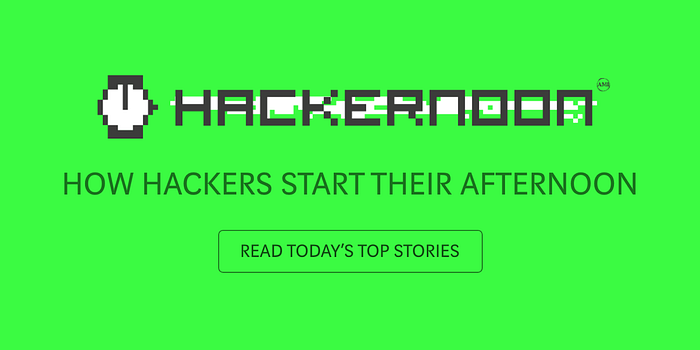Latest news about Bitcoin and all cryptocurrencies. Your daily crypto news habit.

When we talk about disruption, classic examples such as print media or taxis come to mind.
The past two decades have seen industries fall one by one to new ways of doing business, all powered by innovative technology.
The pace isn’t going to slow anytime soon.
In fact, thanks to blockchain, we’re going to hear about more and more industries facing disruption.
You may think your industry is bulletproof. It can’t be disrupted, or at least, it won’t be this time around.
I wouldn’t be so sure.
Take a look at this list, and ask yourself whether or not your industry shares any of these traits.
1. Controlled By A Central Entity
Blockchain is a decentralized platform where every participant in the network has a stake and a certain amount of power.
If your industry has a central entity that exerts a lot of control, or an entity that everyone else depends on, then your industry is probably ripe for disruption.
Take Dropbox for example:
Their business is fairly simple — users pay for a subscription, and Dropbox stores their files.
But today, we have a digital currency called Filecoin. It’s similar to bitcoin. So, if a million people get together and create a network, then storage could be bought and paid for using Filecoin. Individuals in the network would either buy storage or provide the storage necessary.
That decentralized network could potentially cripple larger entities like Dropbox.
2. Mistrust Between Participants
Is there a sense of mistrust between participants in your industry?
If the answer is yes, then blockchain may be able to disrupt your industry because it works by consensus between a group of participants that share the blockchain.
For example, if you’re buying a house, you use a title company who verifies everything and holds the money in an escrow account. At some point the title is transferred and the money is released.
But with blockchain, business rules (called smart contracts) are encoded in the software.
If A happens, then it automatically triggers B. Once those conditions are automated, you don’t have to worry about mistrust between participants. The transaction is guaranteed to execute if the conditions are met. In the home buying example, once the funds are deposited, the title would automatically be transferred.
There would be no opportunity for mistrust. A malicious actor can be easily identified on the blockchain.
More importantly, it’s not in the economic interest of these bad actors to be a participant and malicious at the same time.
It’s better for them to leave the network or play by the rules.
3. Middlemen Or Intermediaries
The home buying scenario brings up another opportunity for disruption.
Industries that use middlemen or intermediaries will certainly be at risk of disruption, as will marketplaces that bring together buyers and sellers.
It all comes back to the way the smart contracts operate. The transactions are automatic — they’re encoded in the software.
Right now, if you want to buy shares in Google, you use a stock exchange. You put in a bid, then you’re matched with the right seller who sells the stock and receives your money. An exchange such as Nasdaq is the central entity, or intermediary, who brings people together and takes a commission.
Using a blockchain and smart contracts has the potential to bypass Nasdaq completely. In fact, Nasdaq is currently investigating transactions of private securities using the blockchain.
4. Potential For Automation
If your company’s business rules can be easily automated, then your industry is also probably at risk for disruption.
Here’s an example:
Suppose you own a number of vending machines.
Every week you send someone to go check on them, collect the money, and replenish what’s in the machine. Then, you submit an order to Coca Cola asking for 500 more bottles. That’s fairly simple.
We’re getting to the point where much of that process will be automated using the machine-to-machine economy and smart contracts.
The internet-connected machine will have a sensor that recognizes when it’s low on supplies, which will automatically trigger a transaction with Coca Cola for a certain amount of bottles. The machine could even have it’s own crypto wallet so that it can automatically make a payment to Coca Cola.
This transaction is a very simple rule that would cut out an intermediary and automate a function.
If the rules are simple enough, blockchain can automate them.
Powered by smart contracts with the blockchain, the Internet of Things (IoT) and the machine-to-machine (M2M) economy can make these use cases happen.
The Human Element
In some ways, this makes it sound like nearly every industry is going to end up wildly transformed.
That’s not necessarily the case.
Yes, many industries will be disrupted, just as they were by the internet. But there’s also a counterpoint — people like doing business with other people.
The human relationship is a large part of how these businesses actually work. For instance, you could sell your home by yourself and use software to do it. But you may want a human connection. You may want to use a real estate agent because it’s a person that will go out and find you the best deal.
Essentially, people want to work with someone who has their best interests at heart and someone they can call if something goes wrong.
We haven’t completely put our trust in machines yet. If your industry is one that I’ve talked about, or has similar characteristics, that might be the only way to avoid the disrupting influence of blockchain.
Because it is coming, likely sooner than you think.
4 Telling Signs That Your Industry Will Be Disrupted By Blockchain was originally published in Hacker Noon on Medium, where people are continuing the conversation by highlighting and responding to this story.
Disclaimer
The views and opinions expressed in this article are solely those of the authors and do not reflect the views of Bitcoin Insider. Every investment and trading move involves risk - this is especially true for cryptocurrencies given their volatility. We strongly advise our readers to conduct their own research when making a decision.
